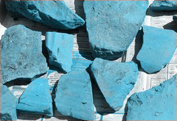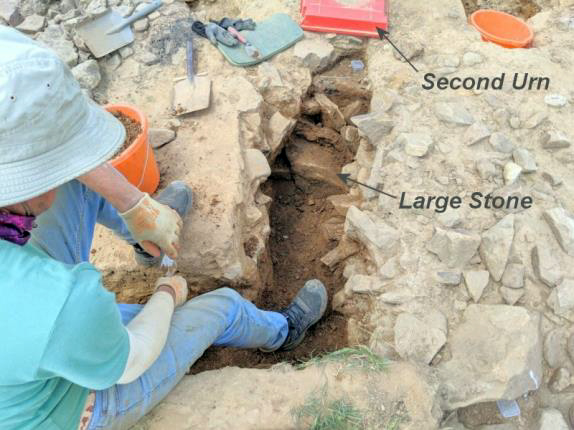

| No.271 July 2024 | Monthly Newsletter |
Graveyard Mysteries Revealed |
 On Sunday Jim Meehan carried out his guided walk around St Wilfrid's Church graveyard in Standish. He entertained us with fascinating stories about the famous, not so famous and sometimes infamous people from the region who ended up there. He started with the grave of John Coulton from Red Rock who in 1840 was 'barbarously murdered' on Wigan Lane by two highway robbers from Manchester. The killers were caught and one died shortly after in prison but the other named Anderton escaped the death sentence when the prosecution's chief witness withdrew her statement. Jim took us around another eleven graves which included the famous internal opera singer Dame Eva Turner who twice appeared on the 'This is Your Life' TV programme. More details of the trip on our blog site. Aspull Ring Ditch DevelopmentsThis is another graveyard from perhaps 3500 years early, which is also revealing its secrets. Last month we reported on cremated bone turning up in a strange octagonal feature. Since then, not only are we getting more bone from this feature, cremated bone is also being found in a number of other locations, particularly around the sandy clay mound in Trench 3a (this is where we expect the primary burial to be, if there is one). We have therefore cut two sections across the mound at right-angles to each other. The first on the northwest side of our second urn has so far drawn a blank (just containing soft sandy clay). However the other one, which goes through the urn itself, is looking very interesting. On the southeast side of the urn (which has been left untouched) a deep section of stones has been revealed embedded in the sandy clay mound. A clear division can now be seen between these stones and the general stony layer which spreads over the rest of the site lying under the burnt and mottled clay layers. Intriguingly, at the bottom of the section, there is a large horizontal stone (could this be our cist burial?).  We are also now getting an idea of the full extent of the general stony layer having opened up a large area to the southeast of the sandy clay mound. The edge of the stony layer has been reached in this trench but the overlying mottled clay continues on to the end of the trench (more work to be done here). As always, you can follow our progress on our website blog here.  Summer TripLast year Derek Cartwright took us on a guided walk around the ancient monuments on Anglezarke and Rivington Moors. This year he will be following this up with another guided walk this time around the southern end of Winter Hill and Smithills Moor. This will be mainly to see the Wimberry Hill Tunnel, an enigmatic feature in the landscape that has so far defied any explanation of its origin. If time and weather allows, we will also be visiting some of the ancient cairns such as the Bronze Age Winter Hill cairn (which suffered some damaged during the recent fires). The date is Saturday 10th August - if you intend going, let me know (if you haven't already done so) so that I can send details of where to meet. Next MeetingWednesday 3rd July - at the Real Crafty on Upper Dicconson Street starting at 7.30pm as usual. This month Paul Kenyon, who is vice chairman of the Wigan Local History and Heritage Society, will be giving us a talk on the Brock Mill Forge and Haigh Foundry both located in the Douglas Valley on the northeast side of Wigan. These mills were at the forefront of the industrial revolution, developing pioneering innovations such as the earliest screw cutting machine at the Brock Mill and one of the earliest steam locomotives in the world at the Haigh Foundry. It's a fascinating story, hope to see you there - BA. |